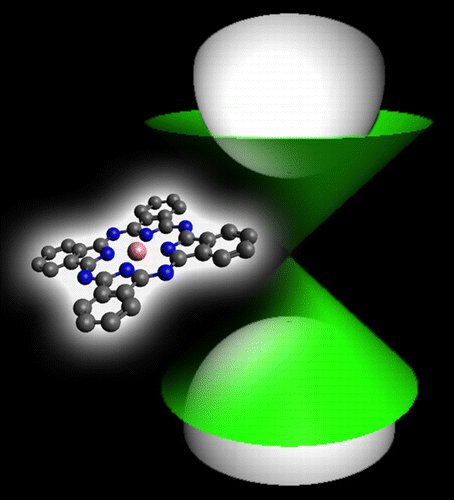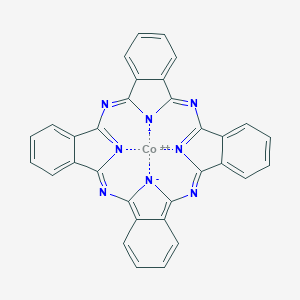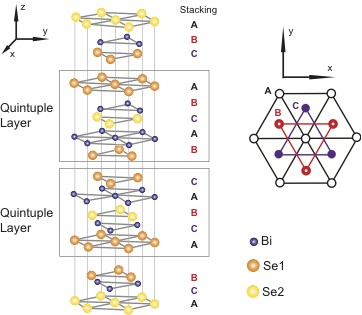Manipulating the topological surface states with molecular adsorbates

A topological insulator is a material in which there is order associated to topology, i.e., the surface can conduct electricity but the bulk of the material is an insulator. In these last years topological insulators have received the attention of a large area of the scientific community thanks to their exotic properties. They are promising materials for the field of spintronics, where they can be exploited to implement spin generator, transport, or torque devices.

Metal−organic molecules are another very promising material for spintronic applications. It has already been demonstrated that metal−organic molecules can be used as spin valves, molecular switches, and other devices Among all metal−organic complexes, phorphyirines and phthalocyanines (Pc) are the most studied systems. These are simple molecules, composed of a macrocycle that can host a central metal atom (see Figure 1). Replacing the central atom will result in changes in the molecular electronic structure, and in the case of half-filled d-orbital metals (i.e., Mn, Fe, and Co) interesting magnetic properties arise.
What if we combine topological insulators and phthalocyanines, for example? Would it be possible to find a combination with new and interesting spintronic properties? In any case the interaction with the substrate would be paramount to the possible new properties. Actually, the first experimental studies of this interaction show that, as could be expected, a metal center-dependent interaction between molecule and substrate exists.
These earlier experimental studies were focused on the molecular point of view, without the direct access to the effects of molecular adsorption on the topological insulator surface band structure. Later experiments showed, inconclusively, that de addition of metal atoms to the organic framework could alter so substantially the properties of the surface states that even gaps may open.
In order to resolve this question, namely the effects of the adsorption of metal−organic molecules on the surface of a topological insulator, an international team of researchers that includes Evgueni V. Chulkov and Andrés Arnau from DIPC and CFM (CSIC-UPV/EHU), performed 1 a combined ARPES and scanning tunneling microscope investigation of cobalt phthalocyanine adsorbed on the prototypical topological insulator Bi2Se3. Their results indicate that the topological surface states (TSS) survive in the subsurface region, while it is disrupted in the first quintuple layer.

ARPES (angle-resolved photoelectron spectroscopy) is a technique for studying the composition and structure of surfaces by measuring both the kinetic energy and angular distribution of photoelectrons ejected from a surface by electromagnetic radiation. In the case of Bi2Se3 we find a surface which crystal structure consists of three groups of five layers called quintuple layers (see Figure 2). The rearchers studied the electronic structure modification induced by the adsorption of different coverage of cobalt phthalocyanine on Bi2Se3 surface.

First ARPES results point toward the existence of a relevant interaction between the molecule and the surface underneath, with the effect of burying the wave function of the TSS below the first quintuple layer. Future studies are required to understand the mechanism of this occurrence.
These results show the potential of metal−organic molecules for the control of Dirac Fermions in topologically protected states through the metal−metal as well as the metal−substrate interaction, which could be further tuned by adding different functional groups to the ligand.
Author: César Tomé López is a science writer and the editor of Mapping Ignorance
References
- Marco Caputo, Mirko Panighel, Simone Lisi, Lama Khalil, Giovanni Di Santo, Evangelos Papalazarou, Andrzej Hruban, Marcin Konczykowski, Lia Krusin-Elbaum, Ziya S. Aliev, Mahammad B. Babanly, Mikhail M. Otrokov, Antonio Politano, Evgueni V. Chulkov,Andrés Arnau, Vera Marinova, Pranab K. Das, Jun Fujii, Ivana Vobornik, Luca Perfetti, Aitor Mugarza, Andrea Goldoni, and Marino Marsi (2016) Manipulating the Topological Interface by Molecular Adsorbates: Adsorption of Co-Phthalocyanine on Bi2Se3Nano Letters doi: 10.1021/acs.nanolett.5b02635 ↩